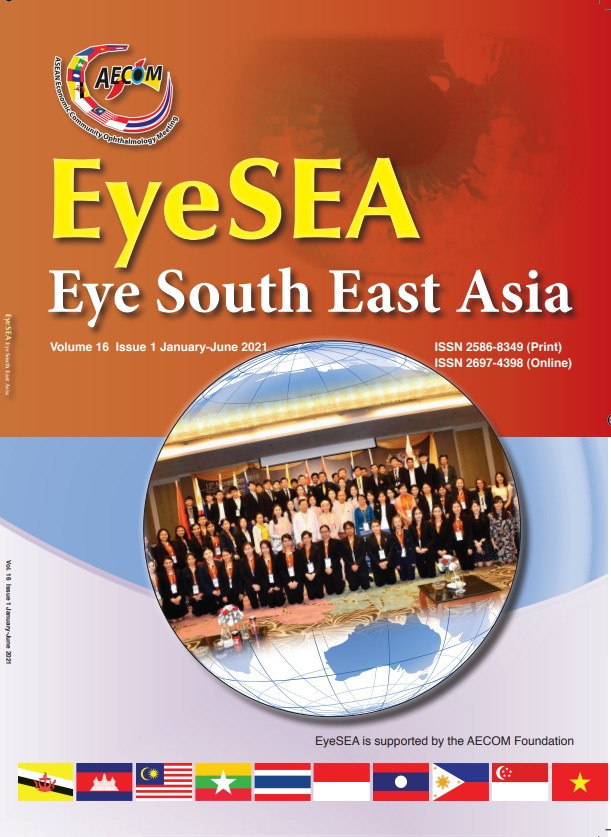A review of paediatric penetrating ocular injury in Hospital Melaka, Malaysia.
Main Article Content
Abstract
Background: About 2.4 million eye injuries occur in the United States annually, of which 35% are in children.1 Incidence of open globe and closed globe injury were similar.2 In children, penetrating injuries are generally more severe and are associated with more complications and longer hospitalization time when compared to closed globe injuries
Purpose: We aim to describe the demographics of penetrating ocular injuries among paediatric patients and to assess post trauma visual outcome and post operative astigmatism.
Methods: A review of case notes of all paediatric patients who sustained penetrating ocular injuries who attended Hospital Melaka between 2013 and 2018.
Results: There were 15 children who were identified. Thirteen were male and two were female. The mean age was 6.2 years old. Majority of the patients were injured by stationaries, followed by household items, toys, road traffic accident and fire crackers. Thirteen patients (87%) sustained corneal laceration wounds, while two patients (13%)sustained corneal-scleral laceration wounds. The wound sizes ranged from 2mm to 13mm. Six patients (40%) had wounds involving the visual axis. Five patients (33%) achieved BCVA of 6/12 and better at one-year post trauma, eight patients (53%) achieved BCVA of 6/15-6/60 while two patients (13%) had BCVA of worse than 6/60. Ten patients (67%) achieved astigmatism of less than -2.00DC at one-year post trauma.
Conclusion: Majority of the injuries were caused by stationaries, which is preventable with proper awareness. Visual outcome was related to the size and location of the wound. Astigmatism contributed minimally to the post trauma BCVA.


